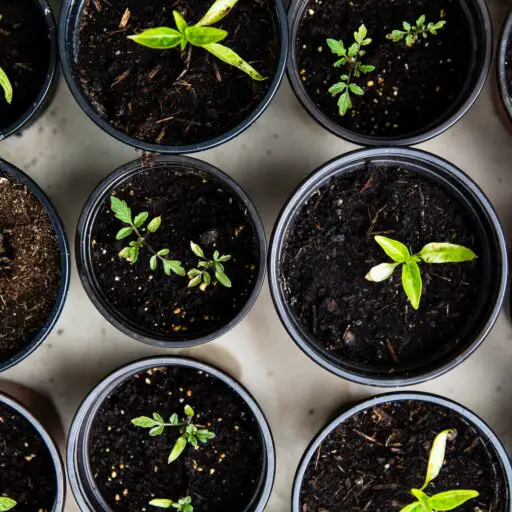Support our educational content for free when you purchase through links on our site. Learn more
Have you ever wandered through a community garden and marveled at the vibrant colors, the buzzing bees, and the scent of fresh herbs? It’s like stepping into a little piece of paradise! But did you know that behind this beauty lies a world of sustainable practices that not only nurture the plants but also the community and environment? In this article, we’ll explore 10 essential practices that can transform your community garden into a sustainable haven. From composting to water conservation, we’ll share insights and tips that will help you cultivate a thriving green space that benefits everyone involved.
Imagine a garden where neighbors come together, share fresh produce, and learn from one another while caring for the planet. Sounds dreamy, right? Well, it’s entirely possible! Let’s dig in and discover how you can make your community garden a beacon of sustainability. 🌍
Key Takeaways
- Composting is Key: Transform kitchen scraps into nutrient-rich compost to enrich your soil and reduce waste.
- Water Wisely: Implement rainwater harvesting and drip irrigation to conserve water and ensure your plants thrive.
- Choose the Right Plants: Opt for native and drought-tolerant varieties to promote biodiversity and reduce maintenance.
- Engage the Community: Foster a sense of belonging through collaboration, workshops, and shared responsibilities.
- Embrace Innovative Tools: Utilize smart irrigation systems and upcycled materials to enhance sustainability.
Ready to take your community garden to the next level? 👉 Shop sustainable gardening products like Rain Bird irrigation systems and organic pest control solutions to get started! 🌼
Table of Contents
- Quick Tips and Facts
- The Roots of Sustainability: A Brief History of Community Gardening
- 10 Essential Practices for Sustainable Community Gardening
- Choosing the Right Plants for Your Community Garden
- Soil Health: The Foundation of a Thriving Garden
- Water Management Techniques for Eco-Friendly Gardening
- Engaging the Community: Building a Supportive Gardening Network
- Composting: Turning Waste into Gold for Your Garden
- Pest Management: Natural Solutions for a Healthy Garden
- Seasonal Gardening: Adapting to Nature’s Rhythms
- Innovative Tools and Technologies for Sustainable Gardening
- Success Stories: Inspiring Community Gardening Projects
- Conclusion
- Recommended Links
- FAQ
- Reference Links
Quick Tips and Facts #quick-tips-and-facts
🌱 Did you know that community gardens can be oases of sustainability, even in the heart of urban jungles? It’s true! By adopting eco-conscious practices, we can minimize our environmental impact and create thriving green spaces. Here are some quick tips to get you started:
- Compost like a pro: Turn kitchen scraps and yard waste into nutrient-rich “black gold” for your garden. How Does Gardening Help the Environment? 10 Surprising Benefits You Didn’t Know About! 🌱
- Become a water warrior: Conserve this precious resource with rain barrels, drip irrigation, and drought-tolerant plants.
- Embrace biodiversity: Attract pollinators and beneficial insects by planting a diverse range of flowers, herbs, and vegetables.
- Choose sustainable solutions: Opt for organic fertilizers, natural pest control methods, and heirloom seeds.
- Reduce, reuse, recycle: Get creative and repurpose materials like pallets, old tires, and even bathtubs as planters!
Remember, every small step counts towards creating a more sustainable future for our community gardens! 💚
The Roots of Sustainability: A Brief History of Community Gardening #the-roots-of-sustainability-a-brief-history-of-community-gardening

Community gardening, while trendy now, isn’t new. It’s rooted in practicality and necessity! Let’s dig into its fascinating past:
- Victory Gardens (1910s-1940s): During World Wars I and II, food shortages inspired citizens to plant “Victory Gardens.” These gardens provided sustenance and boosted morale. Imagine the collective spirit as communities united to grow their own food!
- Reclaiming Urban Spaces (1970s): The ’70s saw a surge in urban community gardens, transforming vacant lots into vibrant green spaces. This movement addressed food insecurity, fostered community bonds, and beautified neglected areas.
- Sustainability Takes Root (2000s-Present): Today, community gardens are at the forefront of the sustainability movement. We’re more aware than ever of our environmental impact, and these gardens offer solutions: reducing food miles, composting, conserving water, and promoting biodiversity.
From its humble beginnings to its current role in creating resilient communities, community gardening has always been about more than just growing food—it’s about growing together. 🤝
10 Essential Practices for Sustainable Community Gardening #10-essential-practices-for-sustainable-community-gardening
Ready to transform your community garden into a shining example of sustainability? Here are 10 key practices to embrace:
- Compost, Compost, Compost! ♻️ Turning food scraps and yard waste into nutrient-rich compost reduces landfill waste and creates a free, eco-friendly fertilizer. It’s a win-win!
- Conserve Water Wisely: 💧 Implement water-saving techniques like rain barrels, drip irrigation systems (check out **Rain Bird **and Dramm brands), and mulching to minimize water usage.
- Choose the Right Plants: 🌻 Opt for native plants, drought-tolerant varieties, and a diverse mix of edibles to attract pollinators and beneficial insects.
- Build Healthy Soil: 🪱 Healthy soil is the foundation of a thriving garden! Incorporate compost, practice crop rotation, and avoid tilling to promote beneficial soil life.
- Go Organic: 🌿 Say no to synthetic pesticides and fertilizers! Embrace natural alternatives like neem oil, insecticidal soap, and compost tea.
- Attract Pollinators: 🐝 Create a haven for bees, butterflies, and other pollinators by planting a variety of flowering plants. Consider installing a bee hotel or building a butterfly garden.
- Reduce, Reuse, Recycle: 📦 Get creative and repurpose materials like pallets for raised beds, old tires as planters, and plastic bottles for cloches.
- Embrace Renewable Energy: ☀️ Explore options like solar-powered lights, water pumps, and even electric lawnmowers to reduce your carbon footprint.
- Educate and Engage: 🧑🤝🧑 Share your sustainable gardening knowledge with the community through workshops, events, and educational signage.
- Celebrate Your Success: 🎉 Take pride in your sustainable practices and inspire others by sharing your garden’s story!
Choosing the Right Plants for Your Community Garden #choosing-the-right-plants-for-your-community-garden
Selecting the right plants is crucial for a thriving and sustainable community garden. Here’s what to consider:
Know Your Site:
- Sunlight: Observe how much sun your garden receives throughout the day. Is it full sun (6+ hours), partial shade (4-6 hours), or full shade (less than 4 hours)?
- Soil Type: Determine your soil type—is it clay, loam, sand, or a mix? You can do a simple soil test or consult with your local extension office.
- Water Availability: Consider your water sources and whether you’ll need to implement water-saving techniques.
Plant for Your Region:
- Native Plants: Native plants are adapted to your local climate and soil conditions, making them low-maintenance and resilient. They also provide essential habitat for local wildlife.
- Drought-Tolerant Plants: If water conservation is a concern, choose plants that can thrive with minimal watering.
- Heirloom Varieties: Heirloom seeds have been passed down for generations and offer unique flavors and characteristics. They’re also open-pollinated, meaning you can save seeds for next year’s garden.
Consider Companion Planting:
- Companion planting involves strategically planting different species together to benefit each other. For example, planting basil near tomatoes can deter pests and improve flavor.
Engage the Community:
- Involve your community members in the plant selection process! Consider their preferences, dietary needs, and cultural traditions.
Soil Health: The Foundation of a Thriving Garden #soil-health-the-foundation-of-a-thriving-garden
Healthy soil is the cornerstone of a productive and sustainable community garden. Here’s how to nurture your garden’s most valuable asset:
Understanding Soil Composition:
Soil is a complex ecosystem teeming with life! It’s made up of:
- Minerals: Provide essential nutrients for plant growth.
- Organic Matter: Decomposed plant and animal material that improves soil structure, water retention, and nutrient availability.
- Water: Essential for plant life.
- Air: Necessary for root respiration and the survival of beneficial soil organisms.
- Living Organisms: From microscopic bacteria and fungi to earthworms and insects, these creatures play a vital role in breaking down organic matter and cycling nutrients.
Building Healthy Soil:
- Add Compost: Regularly amending your soil with compost is like adding vitamins to your diet! It improves soil structure, boosts fertility, and enhances drainage.
- Mulch, Mulch, Mulch: Applying a layer of organic mulch (like wood chips, straw, or shredded leaves) helps retain moisture, suppress weeds, and regulate soil temperature.
- Practice Crop Rotation: Rotating crops each season helps prevent the depletion of specific nutrients and interrupts pest cycles.
- Minimize Tillage: Excessive tilling can disrupt soil structure and harm beneficial organisms. Consider no-till gardening methods to preserve soil health.
Testing Your Soil:
- Conducting a soil test every few years can provide valuable insights into your soil’s pH level and nutrient content. This information helps you make informed decisions about soil amendments and plant selection.
Water Management Techniques for Eco-Friendly Gardening #water-management-techniques-for-eco-friendly-gardening
Water is a precious resource, especially in community gardens. Let’s explore some effective water management techniques to minimize water usage and create a more sustainable garden:
Rainwater Harvesting:
- Rain Barrels: Install rain barrels beneath downspouts to collect rainwater from rooftops. This free, readily available water source is ideal for irrigating your garden.
- Rain Gardens: Create shallow depressions in your landscape to capture rainwater runoff. These gardens are planted with water-loving plants that help filter pollutants and prevent erosion.
Efficient Irrigation:
- Drip Irrigation: Unlike overhead sprinklers that lose water to evaporation, drip irrigation systems deliver water directly to plant roots, minimizing waste.
- Soaker Hoses: These porous hoses slowly release water along their length, providing deep, even watering.
- Watering Timers: Automate your irrigation system with a timer to ensure consistent watering and prevent overwatering.
Water-Wise Gardening Practices:
- Mulching: Applying a layer of organic mulch around plants helps retain soil moisture and reduces evaporation.
- Water Deeply and Less Often: Encourage deep root growth by watering deeply but less frequently.
- Water in the Morning: Watering in the early morning allows plants to absorb moisture before the heat of the day, minimizing evaporation.
- Group Plants with Similar Water Needs: Cluster plants with similar water requirements together to avoid overwatering or underwatering.
Engaging the Community: Building a Supportive Gardening Network #engaging-the-community-building-a-supportive-gardening-network
A thriving community garden is about more than just the plants—it’s about the people! Cultivating a strong sense of community is essential for long-term success and sustainability. Here’s how to foster a supportive gardening network:
Communication is Key:
- Regular Meetings: Hold regular meetings to discuss garden updates, address concerns, and make decisions collectively.
- Online Platforms: Create a website, social media group, or email list to share information, coordinate events, and stay connected.
- Clear Signage: Use clear and informative signage throughout the garden to communicate rules, guidelines, and upcoming events.
Create Opportunities for Collaboration:
- Work Parties: Organize regular work parties to tackle larger tasks like building raised beds, spreading mulch, or planting trees.
- Skill-Sharing Workshops: Host workshops on various gardening topics, such as composting, seed starting, or pruning techniques.
- Potlucks and Celebrations: Celebrate your harvests and milestones with potlucks, picnics, or other community gatherings.
Foster a Welcoming and Inclusive Environment:
- Accessibility: Ensure the garden is accessible to people of all abilities by providing raised beds, paved pathways, and adaptive tools.
- Diversity and Inclusion: Create a welcoming space for people of all backgrounds, cultures, and experiences.
- Conflict Resolution: Establish clear communication channels and conflict resolution strategies to address any issues that may arise.
Composting: Turning Waste into Gold for Your Garden #composting-turning-waste-into-gold-for-your-garden
Composting is like alchemy for gardeners—transforming kitchen scraps and yard waste into “black gold” that enriches your soil and reduces landfill waste. Here’s how to get composting in your community garden:
Choosing a Composting Method:
- Hot Composting: This method involves creating a large pile of organic materials and maintaining a high temperature (130-160°F) to break down materials quickly. It requires more space and effort but produces compost in a matter of weeks.
- Cold Composting: This slower method involves simply piling organic materials and allowing them to decompose naturally. It requires less maintenance but can take several months to a year to produce compost.
- Vermicomposting: This method utilizes worms (typically red wigglers) to break down food scraps into nutrient-rich compost. It’s ideal for smaller spaces and can be done indoors.
Building Your Compost Pile:
- Location: Choose a well-drained location for your compost pile or bin.
- Materials: Aim for a balance of “green” materials (nitrogen-rich, like food scraps and grass clippings) and “brown” materials (carbon-rich, like dried leaves and shredded paper).
- Moisture: Keep the compost pile moist but not soggy.
- Aeration: Turn the pile regularly to provide oxygen for the decomposing organisms.
Using Your Compost:
- Once your compost is dark, crumbly, and has an earthy aroma, it’s ready to use! Spread it around your garden as a natural fertilizer, soil amendment, or mulch.
Pest Management: Natural Solutions for a Healthy Garden #pest-management-natural-solutions-for-a-healthy-garden
Dealing with pests is a fact of life for gardeners, but there are plenty of natural and eco-friendly ways to keep them in check without resorting to harmful chemicals:
Prevention is Key:
- Healthy Soil: Strong, healthy plants are better equipped to resist pests and diseases.
- Crop Rotation: Rotating crops each season helps disrupt pest cycles.
- Companion Planting: Strategically planting certain species together can deter pests. For example, marigolds repel nematodes and other soil-borne pests.
Natural Pest Control Methods:
- Handpicking: For minor infestations, handpicking pests and dropping them into a bucket of soapy water can be effective.
- Water Sprays: A strong blast of water can dislodge aphids and other soft-bodied insects.
- Insecticidal Soap: This natural pesticide is effective against soft-bodied insects like aphids, mites, and whiteflies. You can find it at most garden centers or make your own by mixing a few tablespoons of dish soap (not dishwasher detergent) with a gallon of water.
- Neem Oil: Derived from the neem tree, this oil disrupts the life cycle of insects and can be used as a natural insecticide, fungicide, and miticide.
- Beneficial Insects: Attract beneficial insects like ladybugs, lacewings, and praying mantises, which prey on common garden pests. You can purchase these beneficial insects online or at some garden centers.
Integrated Pest Management (IPM):
IPM is a holistic approach to pest management that combines various methods to prevent and control pests while minimizing environmental impact. It involves:
- Monitoring: Regularly inspect your garden for signs of pests.
- Identifying: Correctly identify pests to determine the most effective control methods.
- Prevention: Implement preventative measures to discourage pests from establishing themselves.
- Control: Use the least toxic control methods first and only resort to more aggressive measures if necessary.
Seasonal Gardening: Adapting to Nature’s Rhythms #seasonal-gardening-adapting-to-natures-rhythms
Gardening in harmony with nature’s rhythms is essential for sustainability. Each season brings its own unique opportunities and challenges. Here’s a glimpse into seasonal gardening practices:
Spring: 🌱
- Soil Preparation: Prepare your garden beds by clearing debris, amending the soil with compost, and warming it with black plastic.
- Planting: Start seeds indoors for warm-season crops like tomatoes, peppers, and cucumbers. Direct sow cool-season crops like lettuce, spinach, and radishes.
- Pest Control: Be on the lookout for early-season pests like slugs, snails, and aphids.
Summer: ☀️
- Watering: Water deeply and consistently, especially during hot, dry spells.
- Weeding: Stay on top of weeds to prevent them from competing with your plants.
- Harvesting: Enjoy the bounty of your summer harvest!
Fall: 🍂
- Planting: Sow cool-season crops like kale, carrots, and garlic for fall and winter harvests.
- Cleanup: Remove spent crops and debris to prevent pests and diseases from overwintering.
- Soil Protection: Plant cover crops like clover or rye to protect and improve the soil over the winter.
Winter: ❄️
- Planning: Order seeds, plan your garden layout, and dream of spring!
- Indoor Gardening: Start seeds indoors for early spring planting.
- Tool Maintenance: Clean, sharpen, and store your gardening tools.
Innovative Tools and Technologies for Sustainable Gardening #innovative-tools-and-technologies-for-sustainable-gardening
From high-tech gadgets to simple yet effective tools, there’s a world of innovation out there to help make your community garden more sustainable and efficient:
Smart Irrigation Systems:
- Soil Moisture Sensors: These sensors measure the moisture level in your soil and send data to your smartphone or irrigation controller, allowing for precise watering.
- Weather-Based Controllers: These controllers adjust your irrigation schedule based on real-time weather data, preventing overwatering during rainy periods.
Precision Gardening Tools:
- Seedling Heat Mats: Give your seedlings a head start with a seedling heat mat, which provides consistent bottom heat for optimal germination.
- pH Meters: Monitor your soil’s pH level with a pH meter to ensure optimal nutrient availability for your plants.
Renewable Energy Solutions:
- Solar-Powered Lights: Illuminate your garden paths and deter pests with solar-powered lights.
- Solar-Powered Water Pumps: Power your irrigation system with a solar-powered water pump.
Upcycled and DIY Solutions:
- Vertical Gardens: Maximize space and create a stunning visual display with a vertical garden made from pallets, gutters, or recycled plastic bottles.
- Rainwater Harvesting Systems: Build your own rain barrels or rain gardens using recycled materials.
- Compost Tumblers: Make composting easier and more efficient with a compost tumbler.
Success Stories: Inspiring Community Gardening Projects #success-stories-inspiring-community-gardening-projects
Let’s draw inspiration from real-life community gardens that are leading the way in sustainability:
- The 462 Halsey Community Garden (Brooklyn, NY): This volunteer-run garden transformed a vacant lot into a thriving green space that provides fresh produce to the community, diverts food waste from landfills, and educates youth about gardening. They’ve implemented rainwater harvesting, solar energy, and extensive composting systems. “We’re learning how to work smarter, not harder,” says one gardener.
- The Edible Schoolyard Project (Berkeley, CA): Founded by Alice Waters, this program integrates organic gardens and kitchens into schoolyards across the country, teaching children about food, farming, and the environment.
- Ron Finley’s Gangsta Garden (South Central Los Angeles): Ron Finley transformed a neglected strip of land into a thriving food forest, demonstrating the power of community gardening to revitalize neighborhoods and improve access to fresh food.
These inspiring stories remind us that community gardens have the power to create positive change, foster sustainability, and bring people together.
Conclusion

In conclusion, creating a sustainable community garden is not just about growing plants; it’s about cultivating a thriving ecosystem that benefits both the environment and the community. By implementing practices like composting, water conservation, and biodiversity, we can transform our gardens into sustainable havens. Remember, every small effort counts towards a greener future! 🌍
Positives of Sustainable Community Gardening:
- Environmental Impact: Reduces carbon footprint, promotes biodiversity, and improves soil health.
- Community Engagement: Fosters relationships among neighbors and encourages collaboration.
- Food Security: Provides fresh, organic produce to communities, especially in food deserts.
Negatives:
- Time Commitment: Gardening requires dedication, which can be a barrier for some individuals.
- Resource Management: Coordinating shared resources can lead to conflicts if not managed properly.
Recommendation: We wholeheartedly encourage you to dive into the world of community gardening! Whether you’re starting a new garden or enhancing an existing one, the benefits far outweigh the challenges. Get your hands dirty and watch your community blossom! 🌱
Recommended Links
👉 Shop Sustainable Gardening Products:
- Rain Bird Irrigation Systems: Shop on Amazon
- Dramm Watering Tools: Shop on Amazon
- Organic Pest Control Solutions: Shop on Amazon
- Composting Supplies: Shop on Amazon
- Books on Sustainable Gardening:
FAQ
What are the best practices for water conservation in a community garden to reduce environmental impact?
Water-Saving Techniques:
- Rainwater Harvesting: Install rain barrels to collect and store rainwater for irrigation.
- Drip Irrigation: Use drip irrigation systems to deliver water directly to plant roots, minimizing evaporation and runoff.
- Mulching: Apply organic mulch around plants to retain moisture and suppress weeds.
- Soil Health: Improve soil structure with compost to enhance its water retention capacity.
Read more about “Unlocking 20 Surprising Benefits of a Community Garden 🌱 …”
How can community gardens incorporate composting and recycling to minimize waste and promote sustainability?
Composting Strategies:
- Community Compost Bins: Set up shared compost bins for garden members to deposit organic waste, reducing landfill contributions.
- Education: Provide workshops on composting techniques and the benefits of recycling organic materials.
- Use of Recycled Materials: Encourage the use of recycled items for garden structures, such as raised beds made from reclaimed wood or old tires.
What types of plants and crops are most suitable for a sustainable community garden, considering climate and soil conditions?
Plant Selection:
- Native Plants: Choose plants that are native to your region, as they are adapted to local climate and soil conditions.
- Heirloom Varieties: Opt for heirloom seeds that are open-pollinated and can be saved for future planting.
- Drought-Tolerant Crops: Select crops that require less water, such as succulents, certain herbs (like rosemary), and native grasses.
How can community gardeners balance individual plot management with collective sustainability goals to ensure a thriving and eco-friendly garden?
Collaboration and Communication:
- Shared Guidelines: Establish clear guidelines for individual plot management that align with the garden’s sustainability goals.
- Regular Meetings: Hold regular meetings to discuss progress, share tips, and address any conflicts that arise.
- Collective Projects: Organize community workdays to tackle larger tasks, such as building compost bins or planting pollinator gardens, fostering teamwork and shared responsibility.
Reference Links
- BMC Public Health: Improving lifestyles sustainability through community gardening
- National Recreation and Park Association: Creating a Sustainable Community Garden
- See What Grows: Sustainable Gardening Tips for Community Gardens
- Benefits of Community Gardens
- Community Garden Policies
- Garden Maintenance Tips
By embracing these practices and insights, you can contribute to a more sustainable future through community gardening. Happy gardening! 🌼


